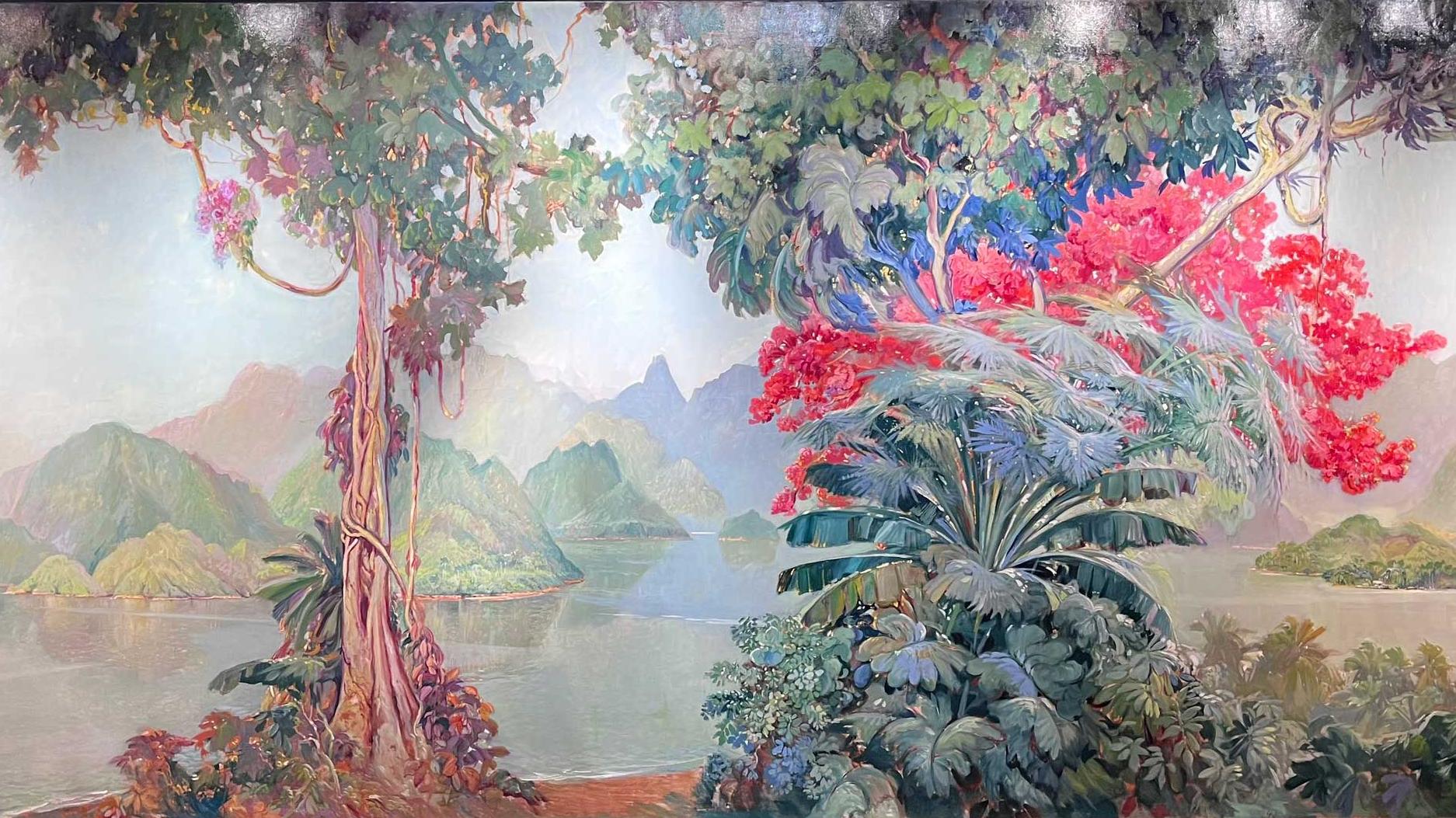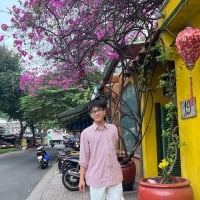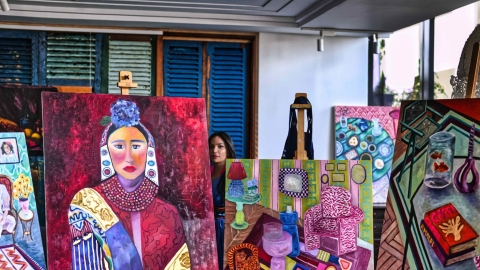After the success of the exhibition "Old Soul of the Strange Wharf" with the four famous painters Pho - Thu - Luu - Dam last year, this year Sotheby's has returned with the exhibition "The Faraway East of Dreams and Pursuits" - to tell the stories and artistic perspectives of French artists who have passed through or stayed with the land and people here.
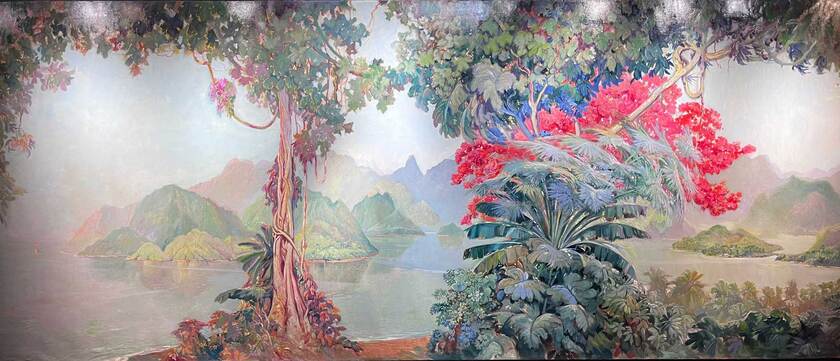
Jean-Louis Paguenaud's "Ha Long Bay" is the largest work at 212 x 513 cm, and is also the largest Indochina painting ever to appear at auction.
Ace Le - Managing Director of Sotheby's Vietnam market shared: "It is almost the 100th anniversary of the establishment of the Indochina School of Fine Arts, and this is an appropriate occasion to look back at the contributions of the generation of French painters to Indochina, not only to establish an academy, but also to create an entire school of art with a huge legacy. Their artistic journey carries with it the ambitions, dreams and perspectives of each individual and the whole group, demonstrating the influence of the West on the flow of Vietnamese fine arts, and vice versa."
Let's admire and review the typical artworks of the artists at the exhibition "The Faraway East of Dreams and Pursuits".
Victor Tardieu received the Indochina Prize in 1920. He moved to Hanoi in 1921 and, together with Nguyen Nam Son, co-founded the Indochina School of Fine Arts in 1925 under the decree of the then Governor General of Indochina. He died in Hanoi in 1937, while still in office. Some of his works:

"A corner of Hanoi street", created around 1921. Oil on canvas, size 20.5 x 25.5 cm.
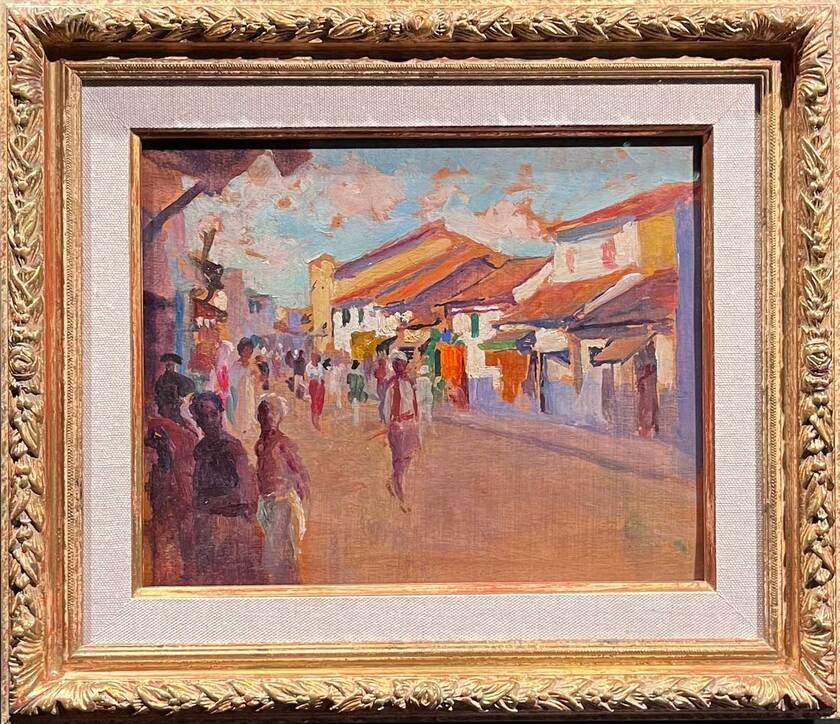
"Cho Lon - Saigon Roads", circa 1920. Oil on canvas, size 20.5 x 25.5 cm.
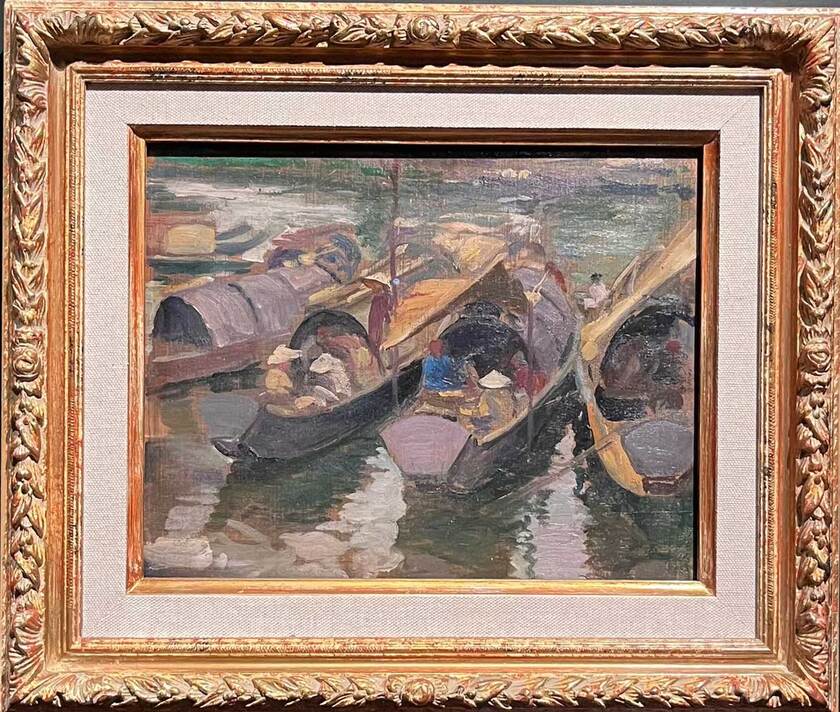
"Boat on the Mekong River", created around 1922. Oil on canvas, size 20.5 x 25.5 cm.
Joseph Inguimberty (1896-1971), joined the faculty of the Indochina School of Fine Arts in 1926 as a professor of Decorative Painting. Inguimberty was trained in both classical and modern styles. He quickly immersed himself in the local culture and earned a reputation as a versatile teacher teaching oil painting, while also passionately embracing lacquer and silk techniques.
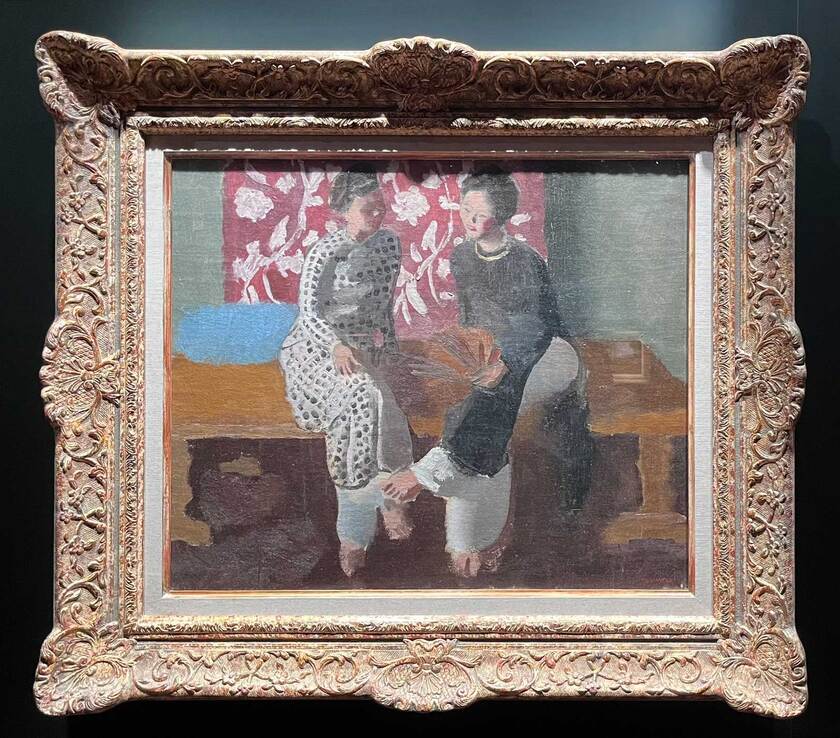
"Feelings", 1938. Oil on canvas, 49 x 61 cm.
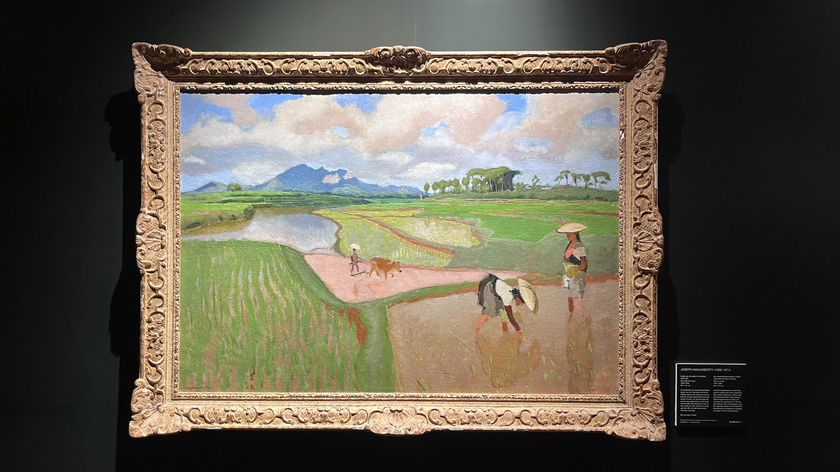
Joseph Inguimberty's outstanding work.

"Girls resting in hammocks", oil on canvas.
Alix Aymé (1894 -1989) was invited by Inguimberty, principal Victor Tardieu, to collaborate in lacquer research at the Indochina Fine Arts School. Aymé was a female painter who contributed to the revival of Vietnamese lacquer art. With her dedication to observation and research, Aymé meticulously compiled notes on the development of lacquer in Indochina to be published in the Overseas Research Journal No. 12 in 1952.
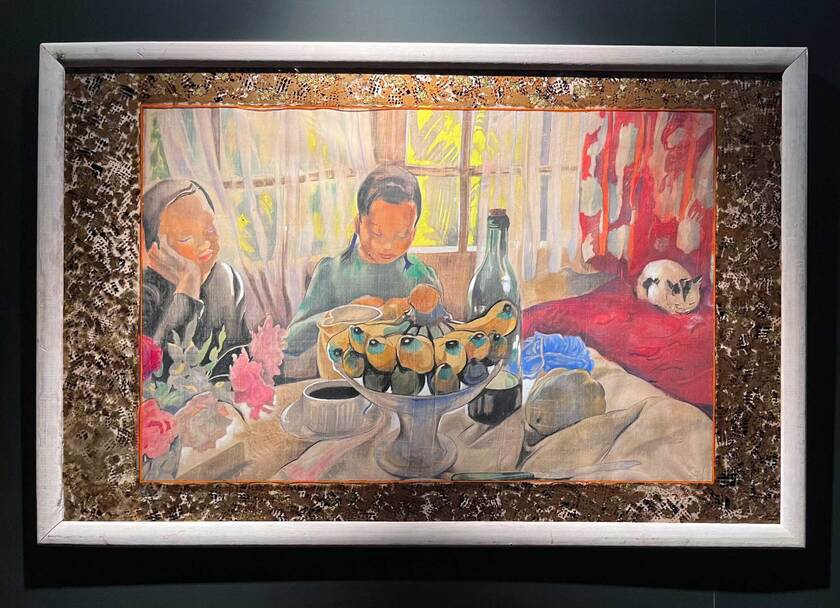
"Afternoon tea in the artist's studio, Hanoi". Materials: ink, watercolor and gouache on silk, 50 x 75.5 cm.
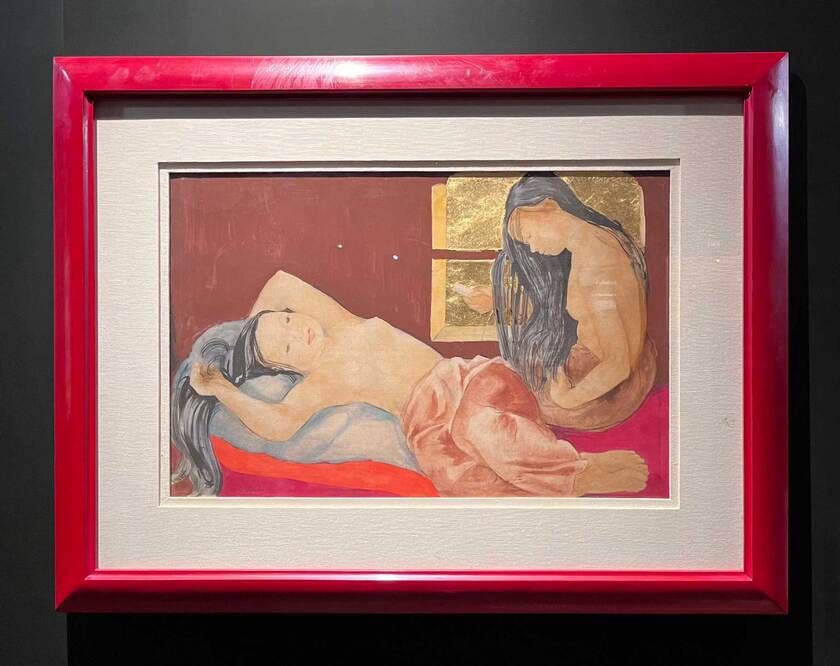
"Two Annamese Girls", circa 1950. Materials: ink, watercolor and gold on silk; size 35 x 52.5 cm.
Esvariste Jonchère (1982 - 1956) was a sculptor who received the Khoi Nguyen Roman Prize in 1925. He came to Hanoi under the Indochina Prize program in 1932. After Victor Tardieu died in 1937, Jonchère succeeded as principal of the Indochina School of Fine Arts until the school closed in 1945.
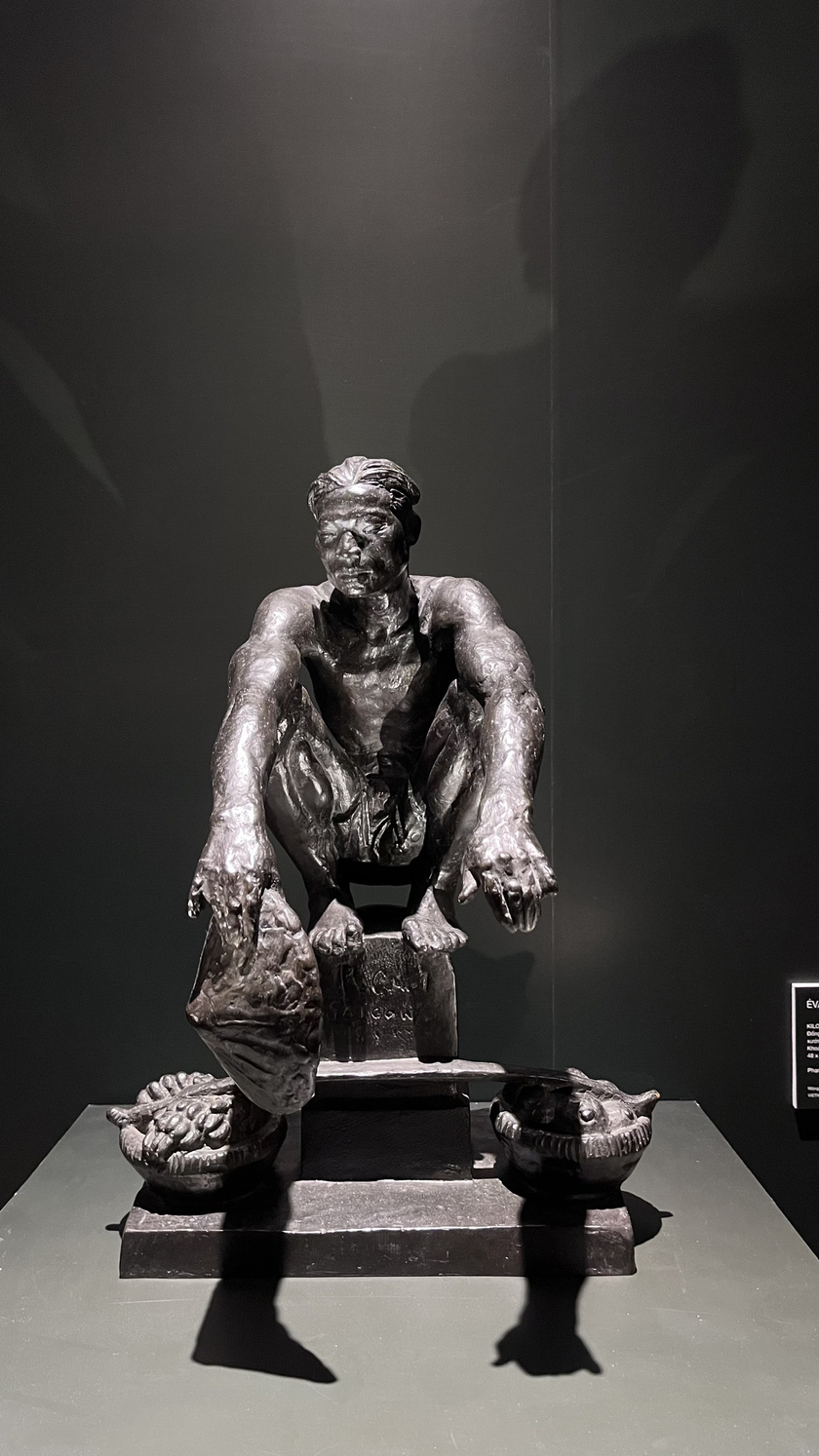
Sculpture "KILOMETRE 81".

"Vietnamese Girl". Material: bronze, made at the Landowski Foundry around 1932-1933. Dimensions: 85 x 38 x 22 cm.

"Vietnamese Landscape", created around 1932-1933. Oil on canvas on cover, size 38 x 41 cm.
Sculptor Paul Ducuing (1867 - 1949), a friend of the Governor General of Indochina, Albert Sarraut, was sent to Vietnam in 1921 - 1924 to make several busts of Emperor Khai Dinh. The version below was made in 1922 during the Emperor's historic visit to France.
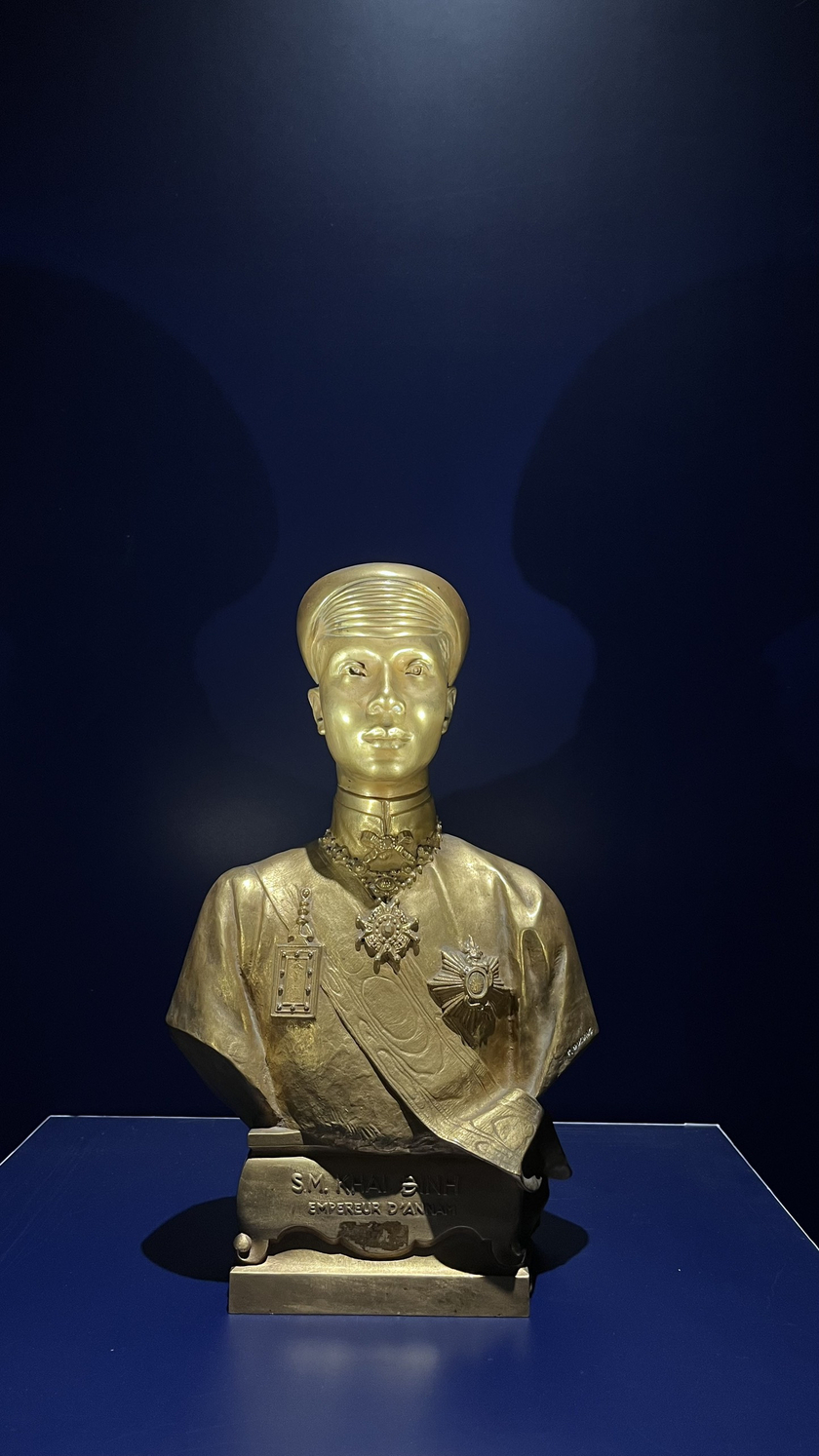
"Portrait of Khai Dinh, Emperor of Annam", 1922. Material: bronze with gold patina, dimensions 36 x 22 x 12 cm.
Charles Dominique Fouqueray was appointed Naval Artist in 1908, after two unsuccessful applications. He received the Doogn Duong Prize in 1914, but because of the war he could not arrive until 1921. Fouqueray was famous for his talent in drawing and lithography, and his work "The Lacquer Workshop in Hanoi" was printed on special Navy paper with a watermark. He later became President of the Society of French Colonial Artists.
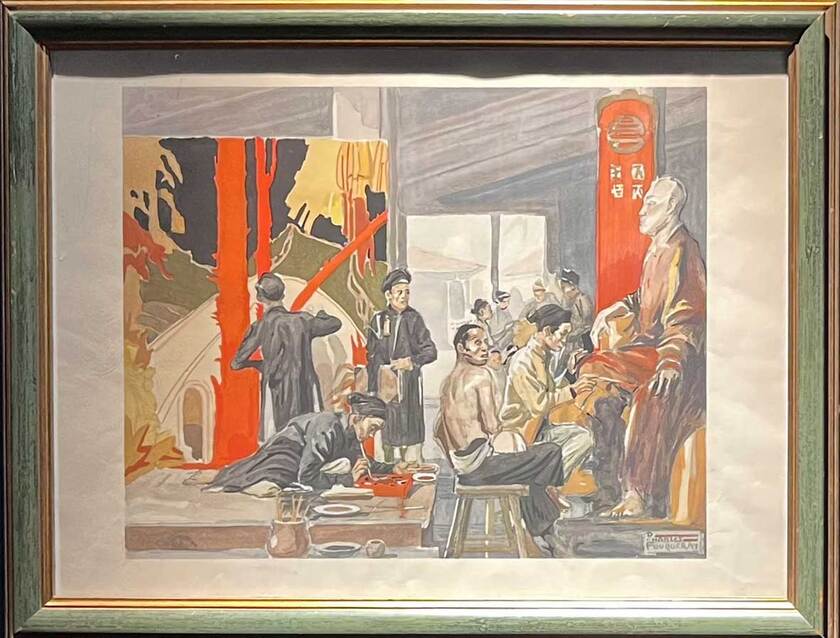
"Lacquer workshop in Hanoi", circa 1921. Lithograph on paper, size 35.5 x 41 cm.
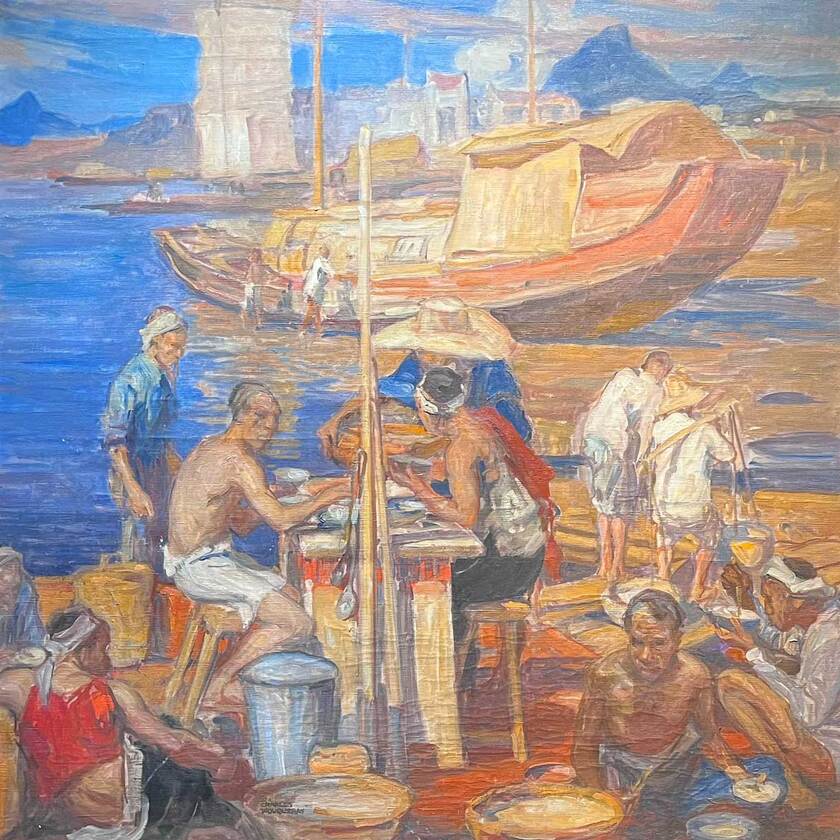
Artwork "Busy riverbank in Indochina". Oil on canvas.
Roger Nedelec (1927 - 2015) was a French military artist who came to Indochina in 1949 - 1951. He was awarded the Legion of Honor in 1951 after his tour in Tonkin. When painting Indochina, his only subject was Ha Long Bay.

"Boat on Ha Long Bay", circa 1940-1950. Oil on canvas, size 60 x 81 cm.
Gaston Roullet (1847 - 1925) was appointed Naval Artist in 1885, and was the first Naval Artist to set foot in Vietnam. While there, he met and became close friends with Dr. Charles-Édouard Hocquard, author of the famous book "A Campaign in Tonkin". When they went to Hue together, Hocquard took photos and Roullet sketched, so the people nicknamed them "Mr. Quan Cai Den" and "Mr. Quan Cay But".

Works "Hue Landscape and People" (left) and "An Nam Landscape".
André Maire graduated from the School of Fine Arts in Paris, was a student and son-in-law of Émile Bernard. He joined the French colonial infantry, went to Vietnam in the 1920s and returned in the 1950s. He was one of the artists who visited the most parts of Indochina. He taught painting in both Dalat and Saigon. Maire's works of Indochina are present in many famous museums in France and around the world.

"Vietnamese Girl Resting", circa 1950s. Oil on wood, size 99 x 72 cm.







